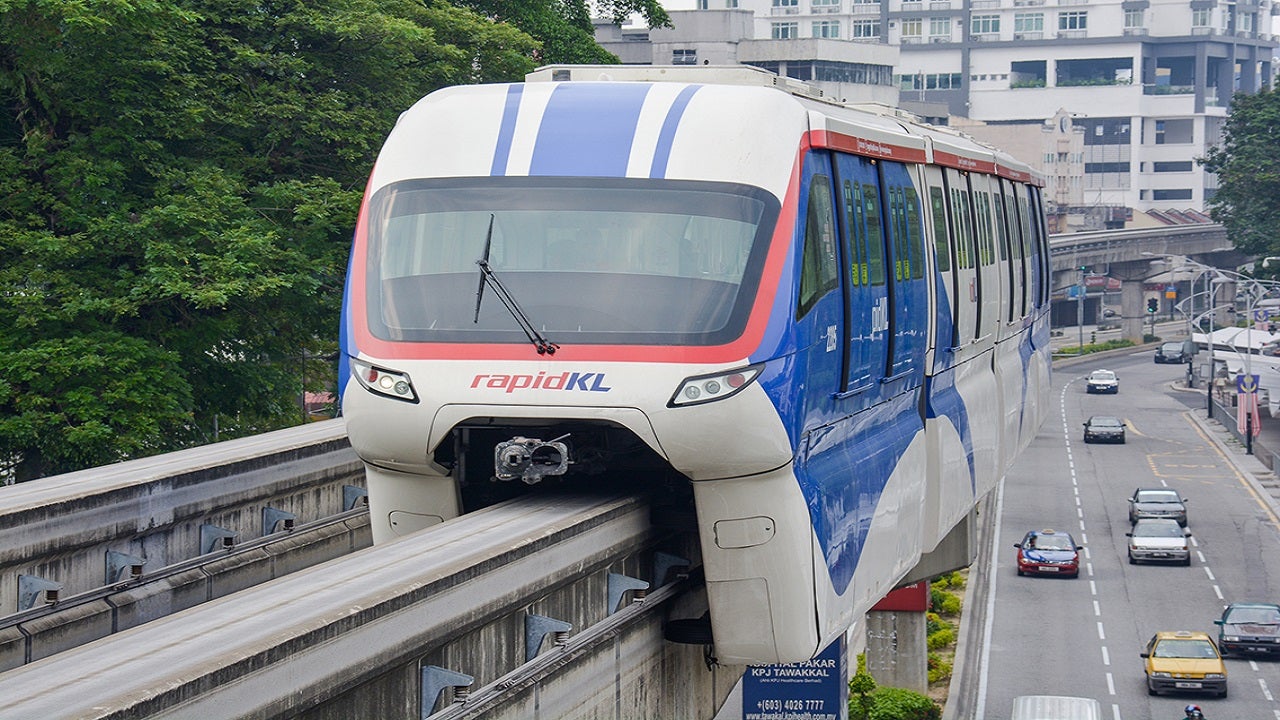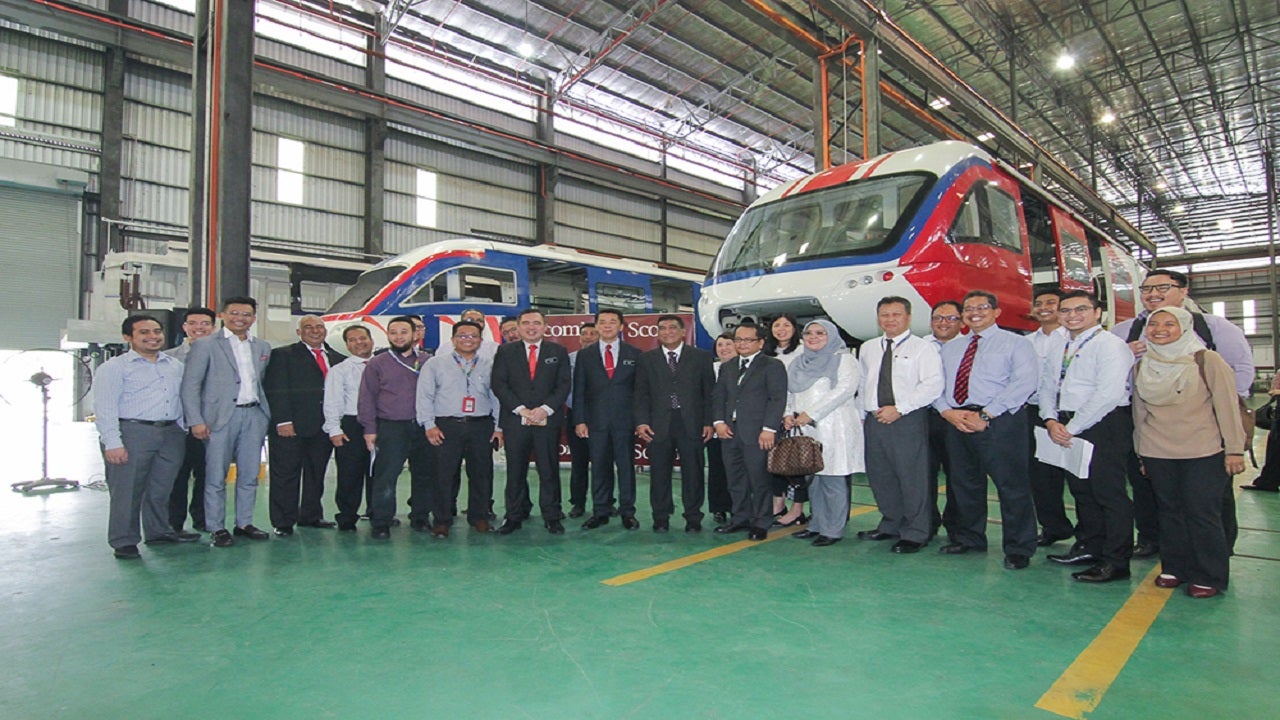The Kuala Lumpur (KL) Monorail, previously known as the Peoplemover Rapid Transit Line, is an urban intercity rail system with two parallel elevated tracks.
With 11 elevated stations, the line connects the city’s transit hub, Kuala Lumpur Sentral in Brickfields, to Titiwangsa Terminal in Jalan Tun Razak, passing via the central business district – the Golden Triangle.
The monorail is owned by Prasarana Malaysia Berhad (Prasarana) and operated by its subsidiary RapidRail.
The 8.6km long KL Monorail became operational in August 2003 and operates at a headway of five minutes. The number of passengers dropped from 46,000 passengers a day in 2019 to about 10,000 a day since the COVID-19 pandemic.
KL Monorail project history
The construction of the KL Monorail was planned by Hitachi in 1997, but was put on hold in December 1997 due to the East Asian financial crisis. Monorail Malaysia, (MTrans), a monorail manufacturer, took over construction in July 1998, and manufactured its own rolling stock to reduce cost. The project was estimated to have cost MYR1.18bn (approximately $375m).
KL Infrastructure Group (KL Infra), the original owner of the project, held a 40-year concession to operate the rail system.
In 2007, the monorail was acquired by SPNB, as KL Infra incurred losses over the years due to depreciation and loan interest payments.
Lines and routes
The KL Monorail passes through Tun Sambanthan, Maharajalela, Hang Tuah, Imbi, Bukit Bintang, Raja Chulan, Bukti Nanas, Medan Tuanku, Chow Kit and Titiwangsa stations, located at a distance of 0.5km-1km each.
The monorail complements existing metro lines, and has been designed to integrate with the other rail systems, including KL’s Rapid Ampang Line between Titiwangsa and Hang Tuah, the Kelana Jaya Line between Bukit Nanas and KL Sentral, the Express Rail Link to KL International Airport at Sentral and other Komuter and intercity rail lines.
The KL Monorail will be connected to the RapidKL LRT Ampang Line through the Titiwangsa Monorail station, which is expected to be opened in July 2022.
Infrastructure The Kuala Lumpur Monorail has 11 stations designed to accommodate longer trains. The stations are elevated structures with platforms on the top floor, and ticketing is provided on the ground or first floors.
All the stations have CCTV cameras on the platforms, which are separated from the lines with fencing. The roofs are made of canvas.
There has, however, been criticism that the platforms are not wide enough for free passenger movement. They also have low-level roofs with poor ventilation, and the escalators only head upwards.
The monorail system has a separate maintenance depot of 14,800m² between KL Sentral and Tun Sambanthan. The depot has storage facilities for off-peak and night hours, two separate buildings with heavy and light maintenance equipment, platforms for interior cleaning and a separate sub-station for depot operations.
KL Monorail rolling stock
The system first operated with ten permanently-coupled, two-car train sets travelling at a top speed of 80km/h. The trains are of a similar design to those of ALWEG Monorail in Seattle, and are 20m long and 3m wide. The trains have 48 seats and space to accommodate 196 standing passengers. The chairs are fixed in the centre of the carriage with standing space provided near the doors.
The monorail has two 75kW motors and runs on 750V DC power. The end of each car is equipped with a coupler to detach and dispatch it to the nearest station in case of power failure, and emergency back-up power ensures the train remains operational for a 30-minute period.
The carriages were manufactured by MTrans at its plant in Rawang, where tests were conducted on the trains.
By 2019, the monorail operated with five sets of four-carriage trains and four sets of two-carriage trains. It expects to add seven more four-car trains to eventually operate with a total of twelve sets of four-carriage trains and terminate all sets of two-car trains.









